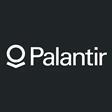The role of the CFO is expanding rapidly, but what is expected of the CFO 2.0, asks Palantir’s Geraldine Lafontaine and Darren Matthews.
Once viewed as a chief accountant, the CFO of today is perhaps more akin to a chief insights or chief collaboration officer.
Previously seen as a tactical finance role, today’s CFO – ‘CFO 2.0 if you like’ is more akin to a strategic CEO advisor – one who supports their leadership by combining a deep knowledge of the numbers with an understanding of company strategy, and pertinent insight into market trends and operating conditions.
“Insight is expected to be instant, frequent and consumable by the entire executive team”
This evolution of the role provides both opportunity and pain for the CFO and supporting team.
Insight is expected to be instant, frequent and consumable by the entire executive team.
Cracking the code of connecting data and analytics to operational decision-making is a critical component in the arsenal of CFO 2.0.
Especially in an increasingly volatile world rife with disruptions and uncertainty, this requires more groundbreaking data solutions than automation and analytics.
The prize and the road ahead
Recent research indicates that many CFOs recognise this shift and are focusing their efforts on establishing the finance function as a strategic partner across the business.
As perhaps the most natural guardian of data within an organisation, they are looking for the next evolution of digital transformation to help achieve their goals and balance this new agenda against the daily decisions that CFOs make every day.
To succeed, business leaders must harness innovation, invest in the right digital transformation and deliver breakthrough economic value to differentiate themselves in their market.
Success requires closing the loop
So how does CFO 2.0 navigate this road and secure the prize?
Success will require connecting data and analytics to operational decision-making.
By ‘closing the loop’, CFOs can help avoid losing valuable intelligence not captured by traditional, linear data and analytical pipelines.
Leveraging an ontology, or ‘digital twin’, of your enterprise enables you to capture intelligence from daily operations.
“Success will require connecting data and analytics to operational decision-making”
As operational decisions are actioned across your organisation, the system captures and writes them back into your existing analytics and modelling landscape.
The result is a data asset that powers rapid improvement of analytics.
Intelligence grows as each decision is taken, empowering core strategic functions (e.g. cash-flow management) and enabling advanced capabilities such as future scenario modelling and financial planning.
Remember data is power, but the truly powerful impact often comes from data combined with human decision-making, as opposed to relying on data alone.
- See how the Palantir Foundry operating system is built to empower human decision-making and fuel digital transformation across retail.

Geraldine Lafontaine is head of retail and consumer EMEA at Palantir

Darren Matthews, global client partner of UK retail at Palantir




























